Abstract
We examined a database of 379 long-term carcinogenicity studies in rats and mice to evaluate sex and species correlations in site-specific carcinogenic responses. Within a species, most target sites showed a strong correlation between males and females. For example, chemicals producing forestomach or liver tumors in males were likely to produce these same types of tumors in females. There was also a significant correlation between species for certain site-specific carcinogenic effects, most notably tumors of the forestomach, liver, and thyroid gland. In contrast, adrenal pheochromocytoma, preputial/clitoral gland neoplasms, and lung tumors showed no significant interspecies correlation. Many chemicals produced a syndrome of carcinogenic effects involving tumors of the skin, Zymbal gland, preputial/clitoral gland, mammary gland, and/or oral cavity. Regarding different target sites, there appeared to be a correlation between thyroid and liver tumors both within and between species. Further, all chemicals producing mesotheliomas in male rats also produced mammary gland neoplasms in female rats. In contrast, kidney and urinary bladder tumors showed no significant association with any other tumor type in rats or mice. If a chemical produced a site-specific carcinogenic effect in female rats or mice, there was approximately a 65% probability that the chemical would also be carcinogenic at that same site in males. The interspecies correlation was somewhat lower: approximately 36% of the site-specific carcinogenic effects observed in one species (rats or mice) were also observed in the other species.(ABSTRACT TRUNCATED AT 250 WORDS)
Full text
PDF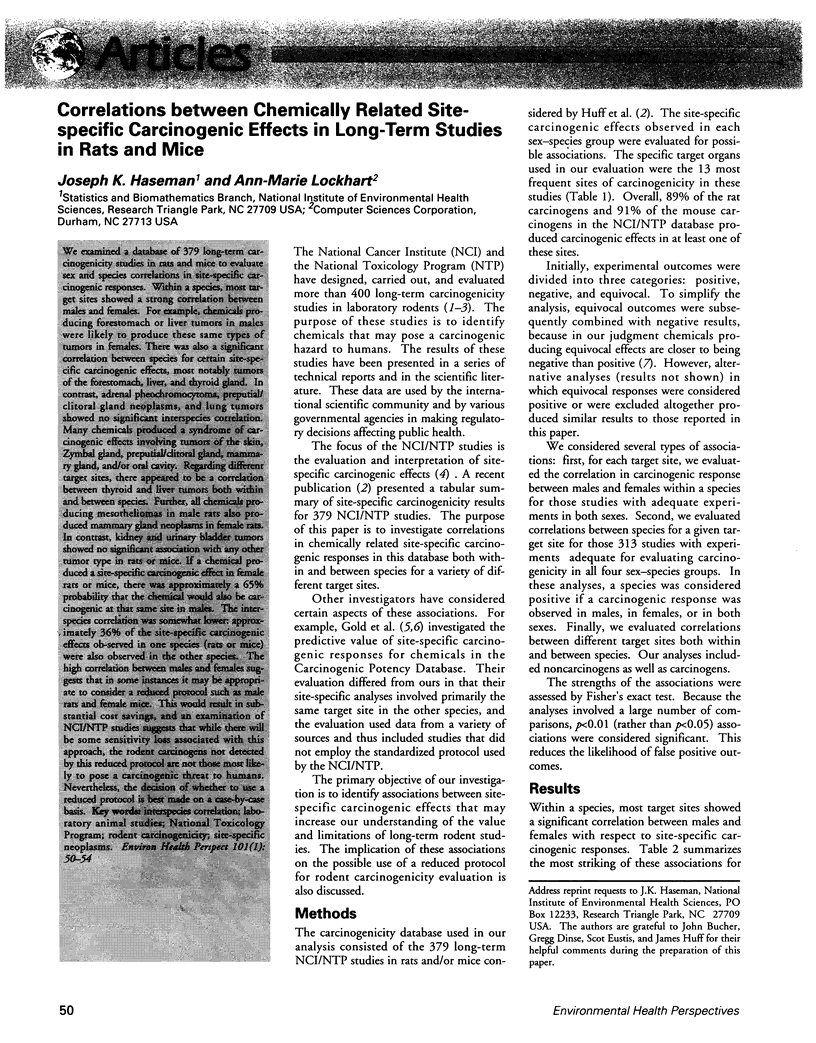
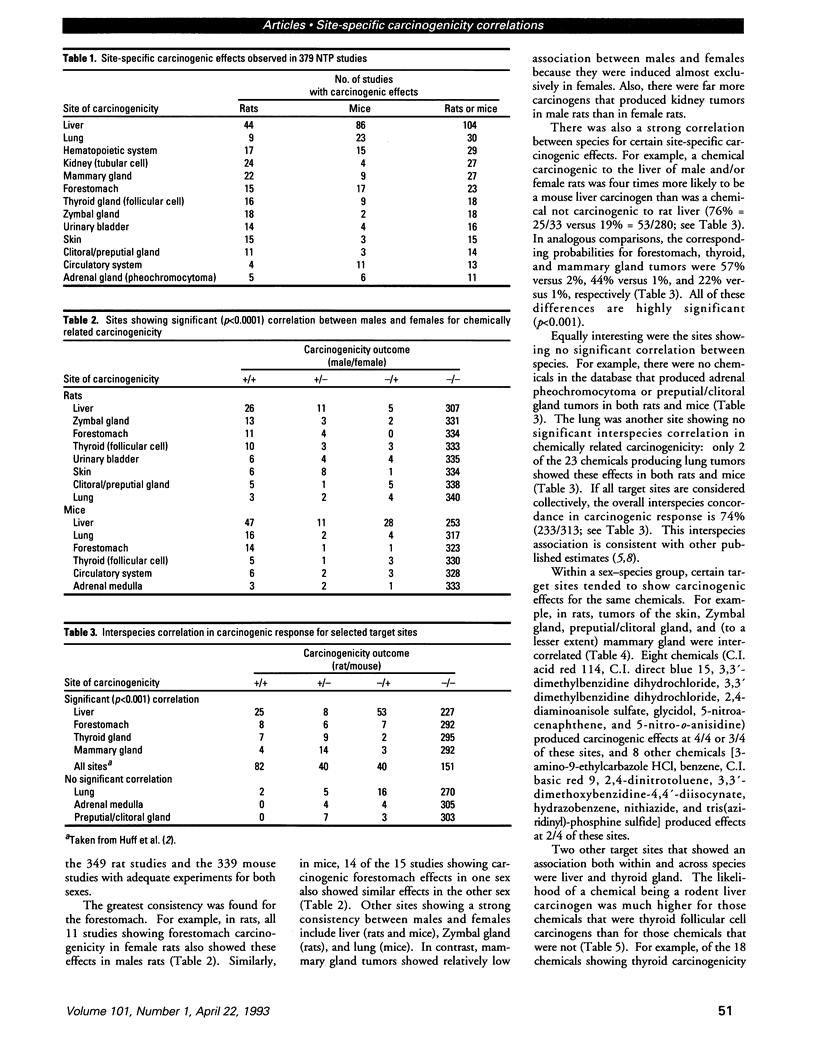
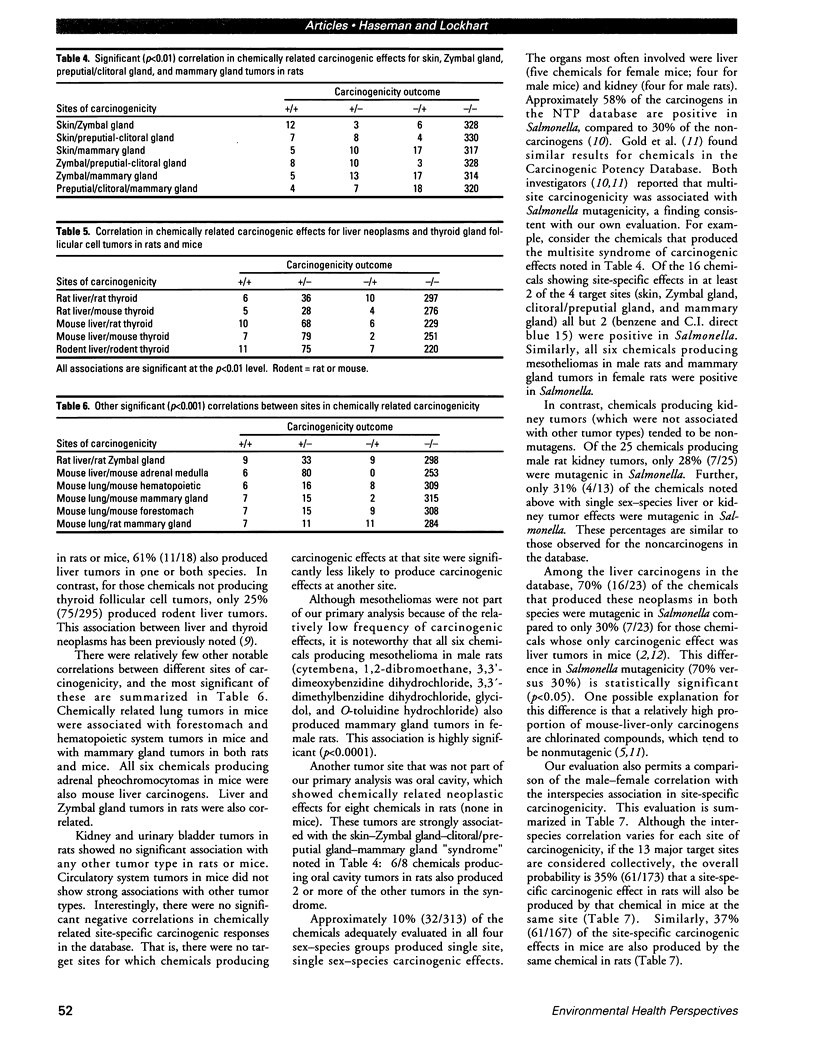
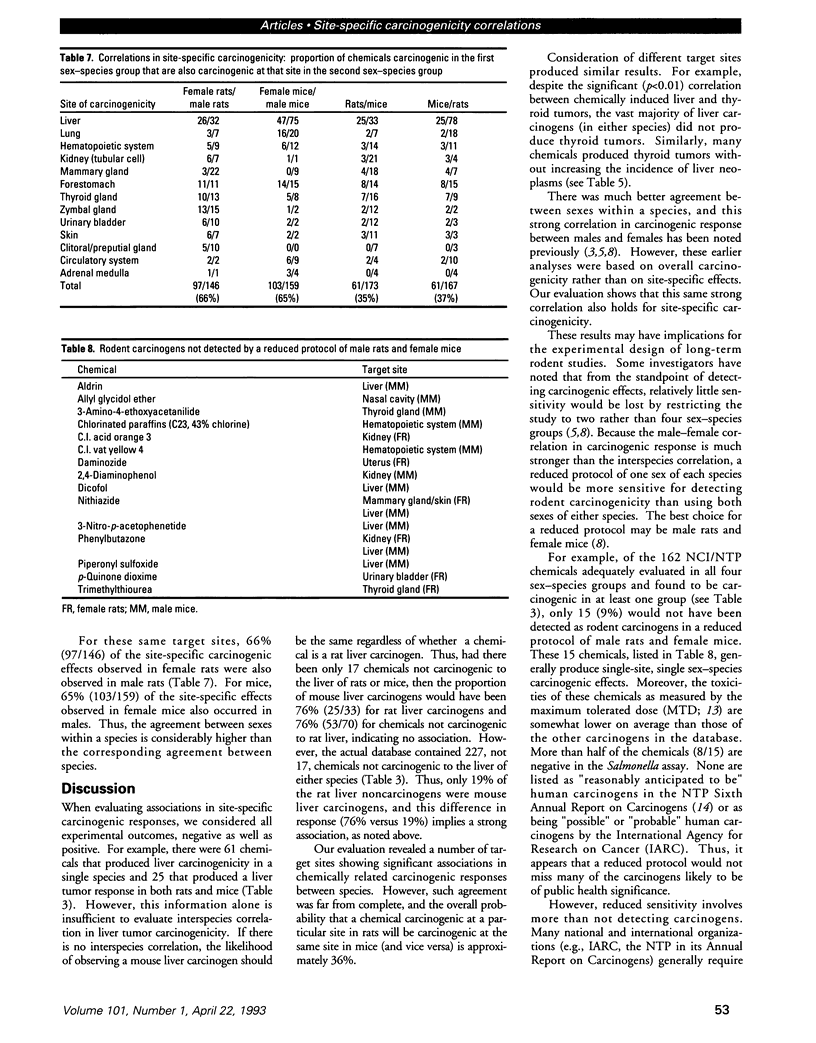
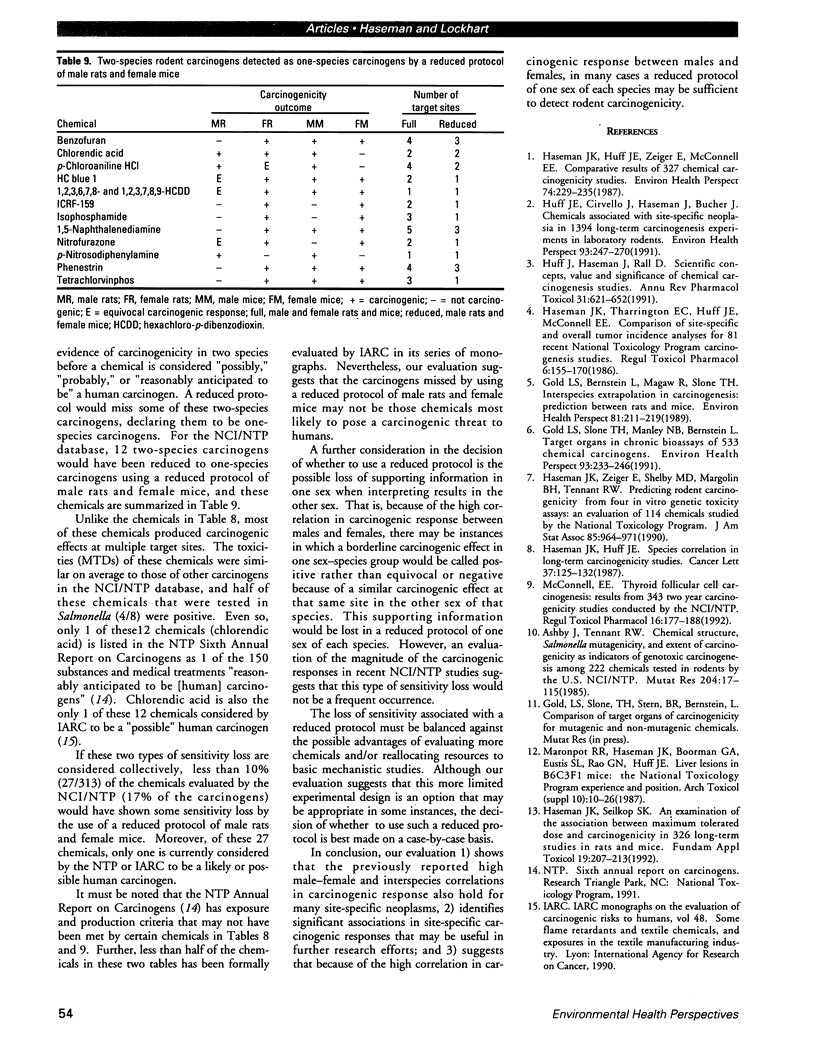
Images in this article
Selected References
These references are in PubMed. This may not be the complete list of references from this article.
- Ashby J., Tennant R. W. Chemical structure, Salmonella mutagenicity and extent of carcinogenicity as indicators of genotoxic carcinogenesis among 222 chemicals tested in rodents by the U.S. NCI/NTP. Mutat Res. 1988 Jan;204(1):17–115. doi: 10.1016/0165-1218(88)90114-0. [DOI] [PubMed] [Google Scholar]
- Gold L. S., Bernstein L., Magaw R., Slone T. H. Interspecies extrapolation in carcinogenesis: prediction between rats and mice. Environ Health Perspect. 1989 May;81:211–219. doi: 10.1289/ehp.8981211. [DOI] [PMC free article] [PubMed] [Google Scholar]
- Gold L. S., Slone T. H., Manley N. B., Bernstein L. Target organs in chronic bioassays of 533 chemical carcinogens. Environ Health Perspect. 1991 Jun;93:233–246. doi: 10.1289/ehp.9193233. [DOI] [PMC free article] [PubMed] [Google Scholar]
- Haseman J. K., Huff J. E. Species correlation in long-term carcinogenicity studies. Cancer Lett. 1987 Oct 30;37(2):125–132. doi: 10.1016/0304-3835(87)90154-6. [DOI] [PubMed] [Google Scholar]
- Haseman J. K., Huff J. E., Zeiger E., McConnell E. E. Comparative results of 327 chemical carcinogenicity studies. Environ Health Perspect. 1987 Oct;74:229–235. doi: 10.1289/ehp.8774229. [DOI] [PMC free article] [PubMed] [Google Scholar]
- Haseman J. K., Seilkop S. K. An examination of the association between maximum-tolerated dose and carcinogenicity in 326 long-term studies in rats and mice. Fundam Appl Toxicol. 1992 Aug;19(2):207–213. doi: 10.1016/0272-0590(92)90153-9. [DOI] [PubMed] [Google Scholar]
- Haseman J. K., Tharrington E. C., Huff J. E., McConnell E. E. Comparison of site-specific and overall tumor incidence analyses for 81 recent National Toxicology Program carcinogenicity studies. Regul Toxicol Pharmacol. 1986 Jun;6(2):155–170. doi: 10.1016/0273-2300(86)90031-0. [DOI] [PubMed] [Google Scholar]
- Huff J., Cirvello J., Haseman J., Bucher J. Chemicals associated with site-specific neoplasia in 1394 long-term carcinogenesis experiments in laboratory rodents. Environ Health Perspect. 1991 Jun;93:247–270. doi: 10.1289/ehp.9193247. [DOI] [PMC free article] [PubMed] [Google Scholar]
- Huff J., Haseman J., Rall D. Scientific concepts, value, and significance of chemical carcinogenesis studies. Annu Rev Pharmacol Toxicol. 1991;31:621–652. doi: 10.1146/annurev.pa.31.040191.003201. [DOI] [PubMed] [Google Scholar]
- McConnell E. E. Thyroid follicular cell carcinogenesis: results from 343 2-year carcinogenicity studies conducted by the NCI/NTP. Regul Toxicol Pharmacol. 1992 Oct;16(2):177–188. doi: 10.1016/0273-2300(92)90056-f. [DOI] [PubMed] [Google Scholar]



